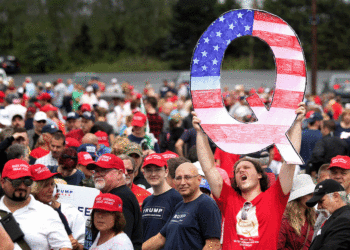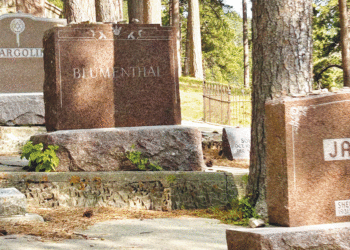As AJW readers might recall, I was in Israel last summer. For more than a week — in Jerusalem, Tel Aviv and Haifa — I met a variety of accomplished Israelis, saw the sights, ate the delicious food, and reported back in a series of “Israel Diary” stories.
I stayed at the Dan Jerusalem Hotel, the former Hyatt Regency, in East Jerusalem. It’s kind of out of the way; but it was just a short walk to the Ammunition Hill light rail stop, which took me to the Old City, the Machane Yehuda market off of Jaffa Road, and to Mount Herzl, Israel’s national cemetery at the line’s southern terminus.
There were 23 stops on the light rail line when I was in Jerusalem; after riots following the July 2 bludgeoning and burning of 16-year-old Mohammed Abu Khdeir, a resident of East Jerusalem, there are 16 stops.
Young Arab Israelis destroyed the equipment at the two stops north of French Hill, truncating the northern part of the line. A story this week in the New York Times goes into this aspect of the current outbreak of hostilities between Jews and Arabs, noting that the mangled light rail line is “certainly a minor casualty compared with the mounting death toll in Gaza, but one laden with symbolic meaning.”
In other words, relations between Jews and Arabs (1.5 million of Israel’s nearly eight million citizens) have been deeply strained by the outbreak of violence. Things were a little tense last summer, but now the atmosphere is poisonous. The Israeli police force, in uniform and undercover, reportedly has been beefed up in West Jerusalem — to protect Palestinians from attacks by Jews. On Monday, around 200 extremist Jews rallied in Jerusalem’s Zion Square and called for “Death to Arabs.” This past Saturday night, right-wing Jewish thugs took advantage of a police absence when air raid sirens sounded, and beat and sexually harassed a group of Jews protesting the bombardment of Gaza.
In the last AJW print edition, July 4, we sadly reported that the bodies of the three Israeli yeshiva students — Naftali Fraenkel, Eyal Yifrach and Gilad Shaar — were found near Hebron. In the past two weeks, the Israeli-Palestinian conflict has spiraled downward. Following a dignified and somber funeral service for the three young Jews, around 200 Jewish extremists rampaged in Jerusalem, in an anti-Arab pogrom. The calls for revenge culminated in the kidnapping and murder of young Abu Khdeir. Three Jews have reportedly confessed to that heinous crime of vengeance, which ignited the riots in East Jerusalem.
In the mainstream press narrative, Israel is portrayed as acting to curtail rocket fire from Hamas on its citizens. Indeed, Hamas has fired hundreds of rockets into Israel, which constitutes a war crime.
In the way of context, there was a cease-fire in place after the 2012 conflict between Israel and Hamas. The resumption of rocket fire from Gaza followed Israeli forces entering the West Bank, ostensibly searching for the three kidnapped yeshiva students. Israeli and American sources have since pointed out that Israel knew the three students had been killed at the outset, and imposed a gag order so the public — along with the students’ families — would not know that they were dead. In the July 11 edition of the Forward, J.J. Goldberg wrote that a faction of the Qawasmeh clan in Hebron has been implicated in the kidnap-murders of the three students.
On this matter of the background to the current round of Israel-Hamas fighting, Peter Beinart, author of The Crisis of Zionism, posted the following message to Facebook this week:
In its coverage of the Gaza War, the U.S. media’s great failure has been to not more seriously investigate the question of who exactly carried out the kidnapping and murder of Naftali Fraenkel, Eyal Yifrach and Gilad Shaar. That kidnapping started this war because Bibi immediately blamed Hamas. He then launched a major assault on it and rearrested prisoners released in the Gilad Shalit deal, which led Hamas to retaliate, and brought Israel and Gaza to the terrible place we are now.
Hamas leaders have repeatedly denied they were involved. (Though, despicably, they have cheered the kidnapping.) Some reports suggest that the culprits came from a Hebron-based clan with Hamas ties, but a history of acting independently and in defiance of the wishes of Hamas’ leadership.
Knowing who exactly carried out the murder — and what role Hamas leadership played, if any — is essential to judging the legitimacy of Bibi’s response, and apportioning responsibility for where we are now.
Yet the U.S. media has hardly investigated this question at all.
For the most part, the Israeli press has been asleep at the switch, too.
As was the case in the two previous Israeli conflicts with Hamas, in 2008-2009 and in 2012, most of the casualties in Gaza are civilians. As the AJW went to press this week, B’Tselem, the Israeli group that monitors human rights in the occupied territories, reported that “172 Palestinians have been killed in the Gaza Strip in the time between early Tuesday, 8 July 2014, when Operation Protective Edge airstrikes on Gaza began, until the evening of 14 July. The fatalities include: 34 minors, 20 women (under age 60), 10 senior citizens. Initial findings indicate that 43 of the people killed were involved in combat.”
B’Tselem also reported, according to the Israel Defense Forces spokesperson, that “Hamas and other armed Palestinian groups have launched over 800 rockets and mortar shells into Israeli territory. Figures released by Israeli medical emergency services provider Magen David Adom indicate that during the first six days of the operation, 13 Israelis were injured by shrapnel, debris from buildings that had been hit, or fires that were the result of rocket landings. According to estimates, without Israel’s advanced air defense system, the number of casualties and the scope of the damage would have been greater.”
B’Tselem, which takes an even-handed approach to depredations of human rights, in Israel and in the occupied territories, stated:
Millions of Israeli citizens, many of whom are children, have been living under the threat of rocket fire for almost a week. For hundreds of thousands of Israelis living in the south of the country, this terrible situation is part of an ongoing routine. The unrelenting attacks have disrupted their lives, denied their right to live in security and hurt their ability to make a living. Every venture outside – to work, school, or a recreational activity – is attended by a sense of danger. Some residents have even decided to relocate for fear they or their loved ones would get hurt.
The deliberate targeting of civilians by Hamas and other Palestinian armed groups is an act that defies humanity and is morally and legally reprehensible.
We would hope that a cease-fire can stop this current round of warfare between Israel and Hamas. American Jews who pray for the peace of Jerusalem should empathize with the civilian victims on both sides of the conflict. In war, death is always the victor.
— Mordecai Specktor / editor@ajwnews.com
(American Jewish World, 7.18.14)




















“In the way of context, there was a cease-fire in place after the 2012 conflict between Israel and Hamas. The resumption of rocket fire from Gaza followed Israeli forces entering the West Bank, ostensibly searching for the three kidnapped yeshiva students.” — this is a blatant lie. Israel was under continuous low-level rocket fire throughout the cease-fire. It got significantly worse when Israel started arresting Hamas terrorists again.
And please do not start with “home-made” rockets. Boston Marathon bombs were also “home-made”.